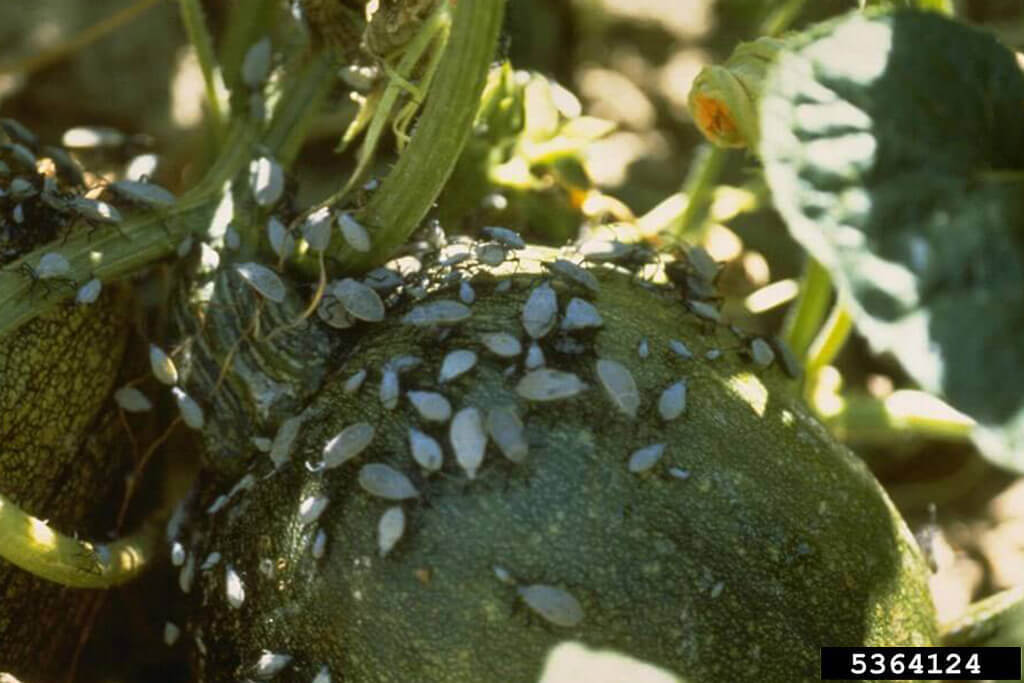
You go to tend to your vegetable garden one morning and notice your once-perfect squash plants are drooping as though they haven't been watered in weeks. Squash bugs could be to blame. Here's how to spot, stop, and prevent these destructive garden pests.
How to get rid of squash bugs
What are squash bugs?
Squash bugs are sucking insects that multiply rapidly, damaging squash and pumpkin plants by sucking sap, which causes leaves and stems to wilt and collapse. They lay tiny, football-shaped, bronze eggs in clusters in the angles between veins on the undersides of leaves. These hatch into green and dark red nymphs that turn light gray and then brown as they age.
Squash bugs appear in spring after overwintering in garden debris, under old boards, in woodpiles—just about anywhere they can find shelter.
Note that they differ from squash beetles, which are copper-colored with black spots and feed on leaf tissue.
How do squash bugs damage plants?
Squash bugs feed in groups on leaves and vines first, then move to the vegetables themselves. Stems that squash bugs have not eaten will still look healthy, while infested sections will suddenly wilt. If the infestation is heavy and enough leaves are damaged, vegetables may not form.
Bugs attack squash and pumpkins first, but will also feast on watermelon, cucumbers, and gourds.
Squash bugs also spread a bacterial disease called yellow vine decline that can cause the whole plant to die. For this reason alone, it's important to prevent and get rid of squash bugs as soon as you see them.
How do I prevent squash bugs?
As with many garden pests, the easiest way to combat squash bugs is to stop them before they start. Here's how.
- Keep the garden clean. Squash bugs overwinter amid garden debris.
- Pull weeds and remove dead plants promptly.
- As soon as you're finished harvesting squash, pull vines to eliminate any remaining eggs and younger stages of squash bugs.
- Plant flowers and herbs that repel squash bugs, such as nasturtium, petunia, and catnip.
How do I get rid of squash bugs?
When it comes to squash bug control, there are several options, depending on the amount of damage and your preferences. Here are a few easy ways to fight back against squash bugs.
- Begin by hand-picking a few and crushing any eggs that you find on the undersides of leaves. Squash bugs are easiest to kill and remove when young.
- For a large planting or infestation, spray with an insecticide, such as Ortho® Insect, Mite & Disease 3-in-1 Ready to Use, according to label directions. Spray again if squash bugs continue to appear. Be sure to coat the undersides of leaves, where eggs may be hiding. Spray blooming plants in the early morning or in the evening, when beneficial pollinators are less likely to be active.
- Set out shingles or boards near squash plants to encourage adult squash bugs to congregate overnight. In the morning, flip over the shingles or boards and remove the bugs.
- Do not add infected plants to your home compost pile. Instead, place in a biodegradable bag and take to a municipal or commercial composting facility, where higher temperatures will kill any pests or disease pathogens.
Need more info and local pesticide recommendations? Contact your regional Extension agent. You can find the nearest Extension office through the Cooperative Extension System map.
While squash bugs are an unwelcome guest to any vegetable garden, by keeping garden spaces clean and taking quick action when they appear, you may still be able to enjoy delicious homegrown squash this season.









 Herbs
Herbs
 Vegetables
Vegetables
 Fruit
Fruit
 Flowers
Flowers
 Succulents
Succulents


